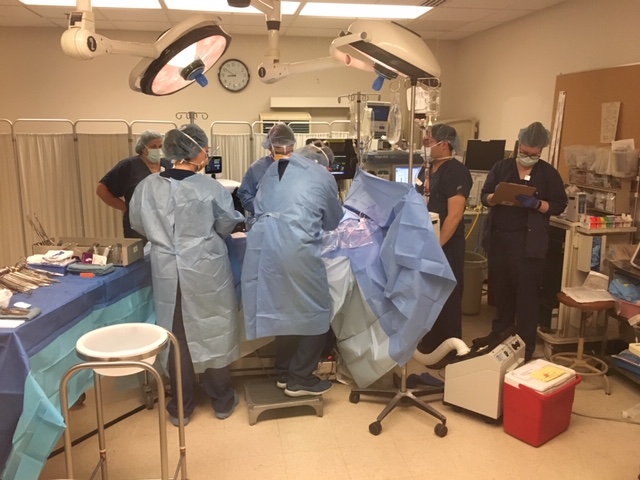Medical Simulation Center
Medical Simulation Center

Residents performing a crisis management scenario in the simulator
The Department of Anesthesiology was a pioneer in the field of medical simulation, owning and operating one of the first anesthesia simulators in the United States. The Department hosted the first International Conference on Simulators in Medical Education in 1995.
The patient simulator uses computer-driven models of human physiology, patho-physiology and pharmacokinetics, combined with lifelike hardware, to approximate a living patient. It not only “breathes" (consumes oxygen and produces carbon dioxide) and “circulates” (has a measurable pulse, blood pressure and cardiac output) but also is capable of responding to a variety of drugs and other interventions in a very realistic manner.
The Simulation Center can be configured as a realistic and functional operating room, intensive care unit, emergency department or patient room. Instructors can operate the simulator and video equipment from the control room, behind a one-way window. The Simulator serves as a training and research facility for residents, medical students, nurses, faculty, visiting physicians, and other health care professionals throughout the medical center complex and also various groups in the community. The Simulator Center provides training for the following applications:
Multidisciplinary Applications
Blue 100" Team Crisis Training (Medicine and Anesthesiology Residents, Nurses, and Respiratory Therapists). This group training for medical and cardiopulmonary resuscitation (CPR) teams became a standard part of the educational curriculum for medical residents.
- Operating Room Crisis Training (Anesthesiology and Surgery Residents, Nurses, Technicians). Anesthesiology residents participate in at least one intensive half-day course per year.
- SIMORS (Simulation for Operating Room Safety)
- OR crisis preparedness: high fidelity case simulations to enrich multidisciplinary team learning.
- ACRM (Anesthesia Crisis Resource Management) scenarios run monthly in half day sessions.
- Conscious Sedation Credentialing (Nurses and Physicians from Gastroenterology, Radiology, Gynecology, and Reproductive Endocrinology)
Anesthesiology Department Applications
Hospital Staff: Respiratory Therapists, Registered Nurses (OR, PACU)
- Industry: Training Sessions (Siemens, Arrow, pharmaceutical firms)
- Public and Community Projects (Congressional Staffers, Friends of Strong, Public School Students, College Students, Medical Center Board of Governors)
- Recruitment of Medical Students and Residents
- Legal Affairs - familiarization training in airway management
- URMC Board of Trustees - familiarization with the benefits associated with having the Simulation Center active and available for improving patient care and safety